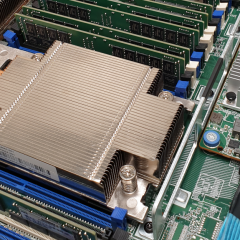Event ID 9314
KB ID 0000358 Problem Event ID 9314 The account specified for the Microsoft Exchange Server Mailbox Manager Administrator is invalid. No mailboxes will be processed. For more information, see Help and Support Center at http://go.microsoft.com/fwlink/events.asp. Either the account specified to run the Mailbox Manager process does not have rights, or an account has not been specified. Solution 1. Launch Exchange System Manager on...
OWA (Outlook Web Access) “Red X” Error
KB ID 0000196 Problem Usually seen on IE7 and IE8, when you try and reply to an email you see a red X in the body of the Email window. Solution Option 1: The simplest fix (Exchange 2000/2003 only – Including SBS2003). 1. Go to http://support.microsoft.com/?kbid=911829 and install that hot fix on the server. Note: This also fixes the error where OWA simply says “Loading”. Option 2 : Whilst In OWA 1. Click...
Exchange 2007 / 2010 change the SMTP Banner
KB ID 0000327 Problem If you want to shield the outside world from seeing what mail platform you are running, or even if you just want to deter the casual script kiddy who is trying to remote fingerprint a massive range of IP addresses. Changing the SMTP response banner is quite simple to do. Out of the box we know we are running a Microsoft mail platform Solution 1. Open Exchange System Manager and find the name of your...
ADPREP /FORESTPREP error “There is a schema conflict with Exchange 2000”
KB ID 0000257 Problem Seen when running “adprep /forestprep” to raise the domain schema to Windows Server 2003. Error: Adprep was unable to extend the schema. [Status/Consequence] There is a schema conflict with Exchange 2000. The schema is not upgraded. [User Action] The schema conflict must be resolved before running adprep. Resolve the schema conflict, allow the change to replicate between all replication partners, and...
Exchange 2000 Install Step by Step
KB ID 0000255 Problem It’s been so long since I did this, I thought I’d document it this time round, as it’s probably going to be the last time I ever do it. Solution Pre – Requisites 1. A server running Windows Server 2000 (Standard or Advanced). It must be a domain member server (it can be a domain controller but that’s not recommended). It must also be able to see a properly configured DNS server. 2....



